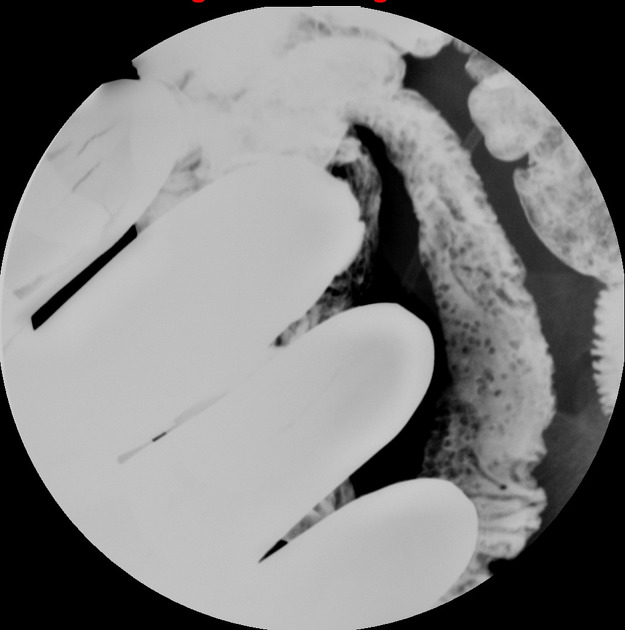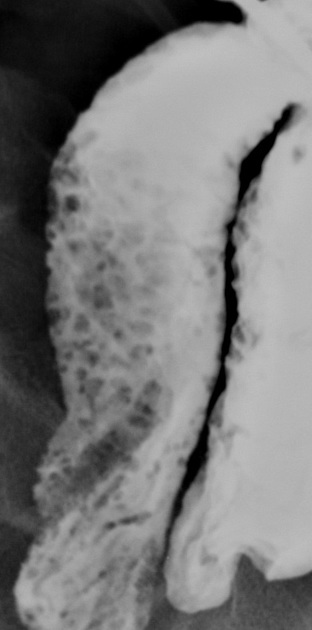Presentation
Severe gas pain and debilitating diarrhea.
Patient Data

Multiple images from a small bowel follow through.
The proximal small bowel is normal-appearing.
In the terminal ileum, there are multiple small discrete (1-3 mm) nodules, compatible with nodular lymphoid hyperplasia, possibly due to an infectious process, given the patient's symptoms.



The first image is a zoomed in image of the terminal ileum, showing multiple discrete nodules, compatible with nodular lymphoid hyperplasia (the larger oval filling defect is external compression from an intraperitoneal catheter)
On the second image, red arrows point out a few of the nodules.
Case Discussion
The majority of the lymphoid tissue in the small bowel is concentrated at the terminal ileum, which means that lymphoid hyperplasia (and lymphoma) are more common at this location.
The two can be distinguished by the appearance of the nodular irregularities: lymphoid hyperplasia is small (1-3 mm) and discrete; lymphoma is larger, confluent, and irregular.
Crohn disease should always be considered when there are terminal ileum findings in a symptomatic patient, however Crohn disease should show a more irregular ulceronodular pattern with focally thickened irregular folds (and possibly antimesenteric sacculations).
Nodular lymphoid hyperplasia is often a normal variation in young people. If there are a much greater than normal number of small discrete nodules, an immunodeficiency (such as CVID) can be considered.




 Unable to process the form. Check for errors and try again.
Unable to process the form. Check for errors and try again.